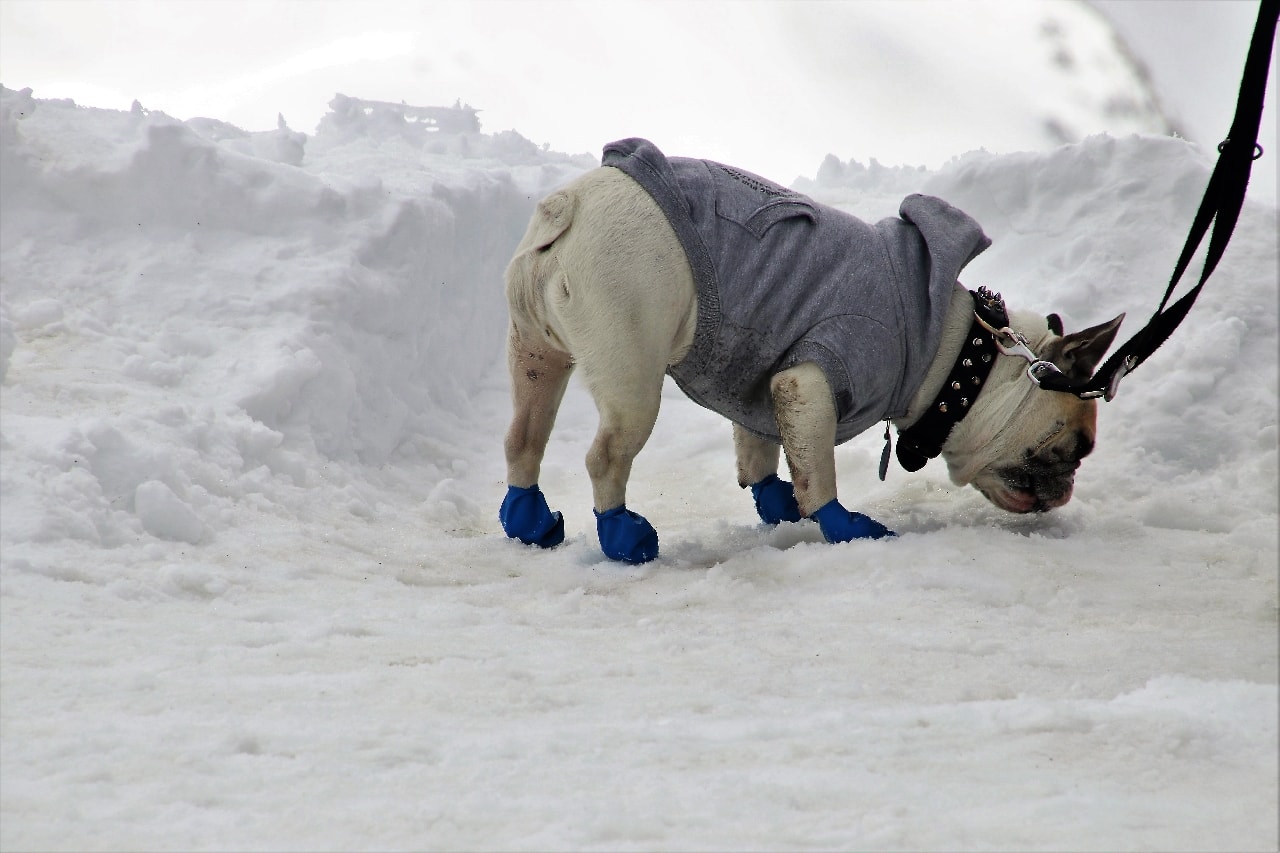In this article
View 3 More +When you’re planning a trip with your dog, the planning is usually as important as the trip itself. Food, water, and shelter are essential, but do you need to add hiking boots for your dog to the list, too? Generally, dogs need not wear boots while going on hikes with their owners.
There are exceptions to this general rule, of course. For example, dogs that aren’t used to walking on rough surfaces or in extreme environments could benefit from boots, but most of the time your dog is out hiking, they won’t need to wear any extra footwear.
Dogs have specialized paws and pads that protect their feet against natural wear and tear, especially if they’re used to walking on rough surfaces. A dog’s paws can look and feel different if they’re regularly walking on abrasive surfaces like concrete or asphalt compared to those who only walk on soft surfaces.
Walking on rough surfaces helps form tough calluses on a dog’s paw pads, keeping them more protected from stones, sticks, and other irritating objects encountered on a hike.
Getting your dog used to getting its paw pads checked is essential. This allows you to visually check their pads for cracks, sore skin, or foreign objects like thorns.

When Should Dogs Wear Boots?
There are certain situations where it is wise to provide your dog with boots, even if they’re a seasoned walker. For example, walking in dangerous terrain with thorns, sharp rocks, or dangerous animals like snakes is one good reason to provide your dog with hiking boots. Even a thin layer of protection can protect their pads from piercing injuries.
One thing to remember when putting boots on your dog is that they might not like it, and you might have difficulty getting them to keep the shoes on their feet! A common reason for needing boots is if you and your dog are hiking in more extreme conditions. However, extreme temperatures are hazardous to dogs, and it’s generally recommended to keep them indoors in these conditions to prevent them from coming into harm’s way.

Hiking in Extreme Heat
In extreme heat, boots can help to protect your dog’s delicate pads from burns. Burns on the pads take a long time to heal and are incredibly painful. Preventing these from occurring in the first place is much easier than treating them. You can provide a pair of light boots that are well-fitting and insulating against the heat of the pavement, hot rocks, or sand.
- Reddening of the paw pads
- Blistering
- Peeling of the skin
- Pain and limping
While boots are beneficial for keeping your dog’s pads safe from heat, it’s important to remember that heat is dangerous for the rest of your dog. Keeping them cool in the heat is key to keeping them safe on a warm hike; dogs can quickly become overheated and suffer heat stroke.

Hiking in Extreme Cold
Extreme cold can cause as much damage as heat can and in a quicker time frame. Frostbite can affect dogs as much as people, but chapped and sore pads are more likely. The cold can cause dryness and cracking; boots offer total protection from the cold on brisk morning hikes. There may even be salt or grit on hiking trails that can get between your dog’s toes and cause irritation.
Boots are the easiest way to keep your dog’s feet insulated against the cold, but ensuring your dog is safe when hiking in freezing temperatures is imperative. A coat can be invaluable for smaller dogs or those without a full coat of fur, as even a light raincoat can keep out the wind chill and stave off the rain.
Drying your dog off thoroughly after your hike will ensure they’re kept warm, and even bringing an extra blanket to wrap around your dog can help them stay toasty.

Final Thoughts
Giving your dog boots for your hike together isn’t always a necessity. Most of the time, dogs build up calluses on their paws which help to protect them from injuries while walking. Boots are a good idea for dogs that aren’t used to rugged terrain since their pads haven’t developed protective calluses. Boots can also be used in extreme temperatures. They provide insulation, keep your dog comfortable, and help them grip slippery surfaces.
Featured Image Credit: Brian Jones, Unsplash



















